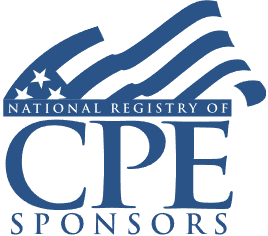Charitable Giving Vehicles in Estate Planning: Private Foundations, CRTs, CLTs, DAFs, and Other Planning Tools
Key Issues for Estate Planners and Advisers, Key Trust Provisions, Operational Requirements, Tax Treatment for Certain Vehicles

Course Details
- smart_display Format
On-Demand
- signal_cellular_alt Difficulty Level
Intermediate
- work Practice Area
Estate Planning
- event Date
- schedule Time
1:00 p.m. ET./10:00 a.m. PT
- timer Program Length
90 minutes
-
This 90-minute webinar is eligible in most states for 1.5 CLE credits.
-
BARBRI is a NASBA CPE sponsor and this 110-minute webinar is accredited for 2.0 CPE credits.
-
BARBRI is an IRS-approved continuing education provider offering certified courses for Enrolled Agents (EA) and Tax Return Preparers (RTRP).
This CLE/CPE webinar will provide estate planning counsel and advisers with a thorough and practical guide to selecting charitable giving vehicles. The panel will cover the eight most common strategies, spending adequate time to discuss the nuances of the most popular structures and the utilities of more esoteric structures. The panel will also discuss federal income tax treatment of certain vehicles, detail operational requirements, review key trust provisions, and discuss both inter vivos and post-mortem strategies for using certain charitable giving vehicles.
Description
Charitable giving can provide significant income and estate tax advantages while also satisfying charitable intent. To ensure these advantages for clients, trusts and estate counsel must have a complete understanding of the legal framework and tax rules applicable to charitable giving vehicles.
When it comes to the types of charitable vehicles estate planners should consider a variety of structures, including but not limited to the common options, such as private foundation, CRT, CLT, or a donor-advised fund. Determining which vehicle will provide the optimum benefits is critical for estate planning for clients with charitable intent.
Listen as our panel discusses the mechanics of certain charitable giving vehicles under current tax law and challenges for counsel, as well as offers key income and estate tax planning techniques.
Outline
- Overview of charitable giving
- Direct giving
- Donor Advised Funds
- Private foundations and private operating foundations
- Sponsoring organizations
- Charitable Remainder Trusts
- Charitable Lead Trusts
- Charitable Gift Annuity
- Charitable LLCs
- Guides on how to identify the best structure for each client
Benefits
The panel will discuss these and other key issues:
- What vehicles are available for charitable giving and what is their impact on estate planning?
- Which asset transfers provide the most income and transfer tax benefits when gifted to a private foundation?
- What are the legal framework and applicable rules for CRTs and CLTs?
- How can you properly structure a CRT or CLT for an income tax deduction and timing of trust income?
- What are the legal framework and applicable rules for DAFs and pitfalls to avoid?
- What are the reporting requirements, operational risks, and opportunities for certain charitable giving vehicles?
NASBA Details
Learning Objectives
After completing this course, you will be able to
- Recognize potential income and transfer tax advantages of establishing a private foundation as part of a comprehensive estate plan
- Identify what asset transfers provide the most income and transfer tax benefits when gifted to a private foundation
- Understand the legal framework and applicable tax rules for CRTs and CLTs
- Understand applicable tax rules for DAFs and pitfalls to avoid
- Recognize the reporting requirements, operational risks and opportunities for certain charitable giving vehicles
- Field of Study: Taxes
- Level of Knowledge: Intermediate
- Advance Preparation: None
- Teaching Method: Seminar/Lecture
- Delivery Method: Group-Internet (via computer)
- Attendance Monitoring Method: Attendance is monitored electronically via a participant's PIN and through a series of attendance verification prompts displayed throughout the program
- Prerequisite: Test745

Strafford Publications, Inc. is registered with the National Association of State Boards of Accountancy (NASBA) as a sponsor of continuing professional education on the National Registry of CPE Sponsors. State boards of Accountancy have final authority on the acceptance of individual courses for CPE Credits. Complaints regarding registered sponsons may be submitted to NASBA through its website: www.nasbaregistry.org.

Strafford is an IRS-approved continuing education provider offering certified courses for Enrolled Agents (EA) and Tax Return Preparers (RTRP).
Unlimited access to premium CLE courses.:
- Annual access
- Available live and on-demand
- Best for attorneys and legal professionals
Unlimited access to premium CPE courses.:
- Annual access
- Available live and on-demand
- Best for CPAs and tax professionals
Unlimited access to premium CLE, CPE, Professional Skills and Practice-Ready courses.:
- Annual access
- Available live and on-demand
- Best for legal, accounting, and tax professionals
Related Courses

test
Available On-Demand

Mastering Fiduciary Accounting Income for Estate Planners and Administrators
Available On-Demand

Joint vs. Individual Trusts in Separate and Community Property States
Available On-Demand
Recommended Resources
Building Your Book: Strategies to Secure Long-Term Success
- Business & Professional Skills
- Career Advancement
- Talent Development